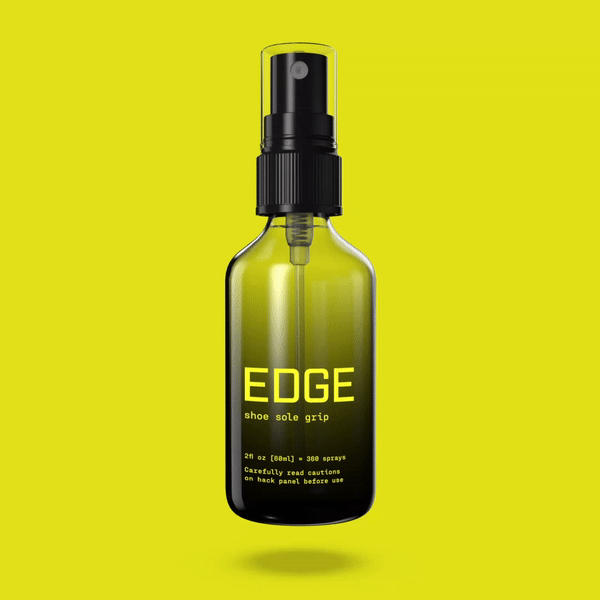🦀 PT Crab Issue 118 - Getting Dizzy With It

This week we’re talking vestibular rehab because you’re probably doing a bit of it even if you’re not a neuro therapist. So let’s look into what nystagmus could tell you if it’s not BPPV in a fantastic case series from the Journal of Neuroscience PT. King Crab subscribers also learned how daily vestibular exercises are better than weekly, and how exercise pre-VOMS can make it spot more problems. Sign up for three times as many articles and to support PT Crab’s mission for just $5 per month here.
Also this week, I came across a fantastic piece from the NYT a in October about sex therapy. What it is, why we need it, and how it’s misunderstood. If you ever discuss topics of sex and sexuality with your patients (and you should, we’ve talked about this before) you should know more about sex therapy and how it can help them. So check out this piece for those details.
With that, let’s dive in!
PT Crab is brought to you by EDGE spray this week, a revolutionary new product to increase shoe grip and prevent slipping. Save 10% with code 10SWAP. More details below.
What if it’s not BPPV? What if it’s a tumor?
The Gist - This case series is a relatively rare piece of coverage for PT Crab, but we think it’s important this week as it points out some key details about BPPV assessment that may have gone fuzzy since you were in school. If your education is anything like mine, you get a couple of weeks of BPPV training, just enough to be confused about nystagmus directions for the rest of your career. This piece has a handy table that breaks them down for you again, but I’m going to save the space for the cases. In each of these, patients presented with conditions that could be seen as BPPV if you weren’t looking closely and a couple of them hinge on the words “paroxysmal” from benign paroxysmal positional vertigo. Unbeknownst to me until reading this paper, paroxysmal means: occurring in short bursts. In most common BPPV cases, nystagmus should fatigue in 30 seconds or less. If it doesn’t do so, you could be in trouble. According to this paper, “Between 12% and 20% of cases of positional vertigo may be attributed to central pathology, and the features suggestive of this during positional testing may include an absence of latency or fatigability of nystagmus, a lack of marked vertigo, pure upbeat (UBN) or downbeat nystagmus (DBN) as well as a lack of responsiveness to CRM.” Conditions associated with central positioning nystagmus include Chiari malformation, multiple sclerosis, multisystem atrophy, cerebellar tumors, and other masses in the posterior fossa, obstructive hydrocephalus, cerebellar stroke, and vestibular migraine (VM).”
In this case series, they looked at three people who were initially thought to have BPPV but turned out to have something else entirely.
Tell Me More - I’m going to be quite brief here, but highly recommend reading the paper for full details of how they got to the diagnosis.
In the first case, a 57 year old woman had a 4 month history of “positional vertigo provoked by rolling in bed to the left.” She also had sensorineural hearing loss bilaterally and tinnitus. After doing a Dix Hallpike maneuver, she had persistent upbeating nystagmus without fatigability. If turns out that she actually had an ependyoma in the caudal aspect of her 4th ventricle. It was resected and her condition improved with vestibular PT.
The second case was a 27 year old man with a 20 year history of episodic vertigo and disorientation provoked by tilting his head backward. They did lots of tests on him, see the paper for details on those, but the one that demonstrated the problem was a Dix Hallpike to both directions that demonstrated a paroxysmal down-beating nystagmus. They referred for imaging and discovered a 3cm diameter mass in his anterior inferior vermis. It turned out to be an astrocytoma and he recovered with vestibular rehab.
The third case? You’ll have to read the paper for it, but it’s worth following this link.
Paper? Paper.
Find Your Edge

EDGE is a new shoe grip spray that has been endorsed by players, coaches, and trainers from AAU through D1 and Pro Basketball. It's been blowing up in the NCAA basketball and volleyball communities, but it is also used for rock climbing, boxing, table tennis, futsal, racquetball, and more. I’m getting my self some to try out on the volleyball court and I’ll definitely let you know how it goes.
How It Works: Spray your sneaker soles right before playing. The formula instantly enhances rubber, giving you crisper footwork and minimizing the risk of injury. It works best on smooth, hard athletic surfaces like hardwood, tile, vinyl, or concrete. It can even improve your grip on dusty, poorly maintained courts or old, worn down sneakers.
And that’s our week! Thanks again for being a subscriber and I hope you’re staying warm in the storm. It’s supposed to get down to 9° here in Richmond, VA so we’ll see how our heating system keeps up, it’s the first test for it in our new house. Here’s hoping 🤞
Have a very happy Christmas this weekend and end of Hanukkah too.
Here’s this week’s bibliography:
- Power, L., Murray, K., Bullus, K., Drummond, K. J., Trost, N., & Szmulewicz, D. J. (2019). Central conditions mimicking benign paroxysmal positional vertigo: A case series. Journal of Neurologic Physical Therapy, 43(3), 186–191. https://doi.org/10.1097/npt.0000000000000276
